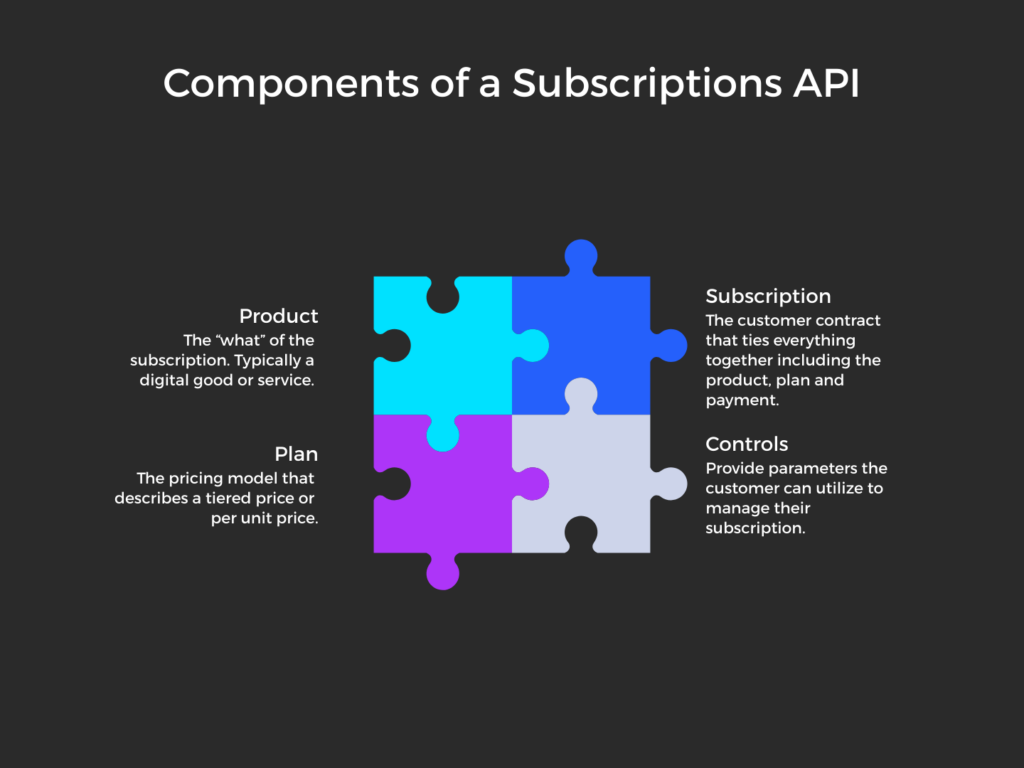Looking at the Components of a Subscriptions API
With the rise of the subscription payment model, more developers are looking to subscription APIs to build and grow their business. Subscription business models are effective ways for companies to retain customers while providing long-term access to a product. At the start of the Covid-19 pandemic, paid subscriptions spiked up to 40% higher than their pre-Covid-19 baseline, and have remained strong through 2020. (Forbes) Developers who effectively utilize subscription APIs can provide various billing structures to their customers as well as accept different payment methods to provide improved user experiences.


Attribute Your Product with the Right Details
Product is the “what” of the subscription. The product is typically either a boxed good, or a service to the customer. This is often defined in a product object as well as a product name, description, images, if the product is shipped, physical dimensions, and other attributes. Altogether in a subscriptions API, product details are important to determine and link to a plan object that passes through some of these details.
Set Up Your Pricing Structure through a Plan
Plan is the core of a subscription model, and is the “how much”, also known as the pricing model. Plan objects can contain the amount, and the billing scheme, which can describe two different pricing models: a tiered price with different fixed options, or a per unit price. An example of tiered pricing could be a digital good, or software with one premium price for on-going access. Alternatively, a per unit price would be a software that charges per user for their account access. A tiered premium price versus a per unit price will affect how the amount is added up and calculated.
Expand Your Reach with Multiple Payment Methods
The subscription often refers to the contract the customer makes when starting their recurring payment program. The Subscription object includes any start and stop dates, and can tie everything together including the product, plan and payment method. When it comes to a global audience, payments can vary from one region to another. Offering customers their preferred local payment method is important for a consistent and reliable experience across borders.


